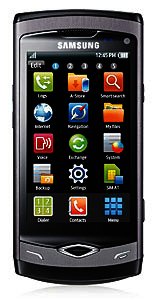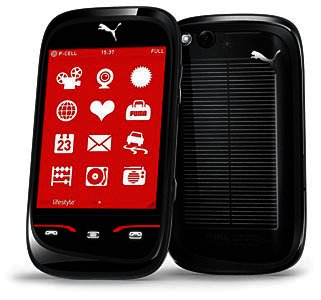PREVIOUS ARTICLENEXT ARTICLE
FEATURE ARTICLES
The Best of the MWC 2010
By Hanleigh Daniels 1 March 2010 | Categories: feature articles Desirable new HTC arrivals Desirable new HTC arrivalsHTC showed off three new smartphones – two Android devices and one running on Windows Mobile 6.5. With the Google Nexus One the current champ of Android devices, many think that HTC’s Desire should be able to lift it out of the saddle. The Desire has similar specs to the Nexus One, being powered by a 1 GHz Qualcomm Snapdragon processor, sporting a five megapixel camera and featuring a 3.7" AMOLED touch-screen, but it also features HTC’s Sense user interface customisation, to distinguish it from the standard Android interface. The HTC Legend also runs on Android 2.1 with HTC Sense and sports a 3.2" AMOLED capacitive touch-screen featuring pinch-to-zoom capability as well as a five megapixel camera, 3.5 mm jack and a 600 MHz processor. HTC also jumped on the mini bandwagon, following the likes of Nokia’s N97 mini and the LG Mini, with a more compact version of its HD2. The HD mini measures 103.8 x 57.7 x 11.7 mm, compared to the HD2’s 120.5 x 67 x 11 mm dimensions and also sports a 3.2" HVGA capacitive touch-screen, 1.1" less than the HD2’s humongous 4.3" display. |
|||
 New smartphones from Samsung and SE New smartphones from Samsung and SESamsung turned their back on the popular Symbian platform last year and opted to sail the seas henceforth on their own bada platform. At least they now have a device to show for their efforts, with the Samsung Wave shipping with a 3.3" “Super AMOLED” touch-screen, a five megapixel camera, a one GHz processor (most probably Qualcomm’s Snapdragon) and high-definition (HD) video recording. Sony Ericsson (SE) launched its Xperia X10 stable mates – the X10 Mini and the X10 Pro. Both devices are Android-based and sport touch-screens, five megapixel cameras, GPS navigation, with the Pro also adding a slide-out QWERTY-keyboard. SE also launched a Symbian-powered Vivaz Pro that sports a 5.1 megapixel camera and the ability to record HD video (720p). The beleaguered manufacturer also let it drop that they, instead of HTC, could have made the Google phone, but turned down the offer as they did not want to dilute the brand. |
|||
| Nokia and Intel spawn MeeGo We thought Nokia’s Maemo operating system, sported by the quite cool N900, was Nokia’s big chance for the smartphone market. Well, it sort of turns out to be so, now that Nokia and Intel have become mobile OS bedfellows after announcing that they’ve combined their two OS platforms, Maemo and Moblin, to create the new MeeGo OS. The new Linux-based software platform will support a range of devices, including pocket PCs, netbooks, tablet PCs and smartphones. MeeGo combines Nokia’s Qt application development environment with the capabilities of the Moblin core OS. Developers will be able to create apps once off for a broad spate of devices using MeeGo, but also deploy them across other platforms, including Symbian. They can then market the apps over Nokia’s Ovi Store as well as Intel’s AppUpSM Center. |
|||
 New Windows mobile OS New Windows mobile OSMicrosoft launched their long overdue Windows Phone Series 7 (WPS7) operating system. Microsoft’s search engine Bing is given more prominence, while the new “hubs” groups related functions from the web, apps and services into a single view. There are different hubs for people, pictures, games, marketplace, music as well as office. Within the games hub for example, you’ll find Xbox live functionality, such as games and access to your online Xbox Live profile. Manufacturers will be limited in their customisation of the OS and adaptions to the UI, so HTC’s Sense UI, that made the HTC’s HD2 so cool, might be a thing of the past. |
|||
 Puma phone pounces on MWC visitors Puma phone pounces on MWC visitorsFrench telecommunications company Sagem teamed up with German sportswear giant Puma to create the Puma phone. Soon to be sported by homeboys everywhere, this sport inspired mobile features a 2.8" touch-screen, as well as a solar panel mounted on the back of the phone to recharge it. It is also fitted with a 3.2 megapixel camera with LED flash, a digital compass, geotagging capability and a pedometer. |
|||
| The Hero of the day Finally, HTC’s Hero scooped Best Mobile Handset or Device at the 15th annual Global Mobile Awards held at the MWC. The Hero was released during 2009 in SA and merged HTC’s Sense UI with Google’s Android mobile operating system. |
|||
USER COMMENTS
Most Read Articles
Read

Magazine Online
TechSmart.co.za is South Africa's leading magazine for tech product reviews, tech news, videos, tech specs and gadgets.
Start reading now >
Download latest issue
Have Your Say
What new tech or developments are you most anticipating this year?
New smartphone announcements (45 votes)
Technological breakthroughs (29 votes)
Launch of new consoles, or notebooks (14 votes)
Innovative Artificial Intelligence solutions (29 votes)
Biotechnology or medical advancements (24 votes)
Better business applications (160 votes)


